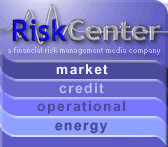Location: New York
Author: Ed Kim
Date: Wednesday, March 12, 2008
The Federal Reserve, trying valiantly to stem the market forces for
sometime, has now taken an extraordinary step of expanding their role in the
current credit crisis. With the announcement that the Fed will lend $200
billion in cash and US Treasuries and extend the lending term from overnight
to 28 days, the risk meter, which was already at High Alert, just went to
Critical.
Here are the risks, as I see them, from the Fedís latest action:
Increased Risk of Credit Malaise Continuing: By allowing brokers to swap
their illiquid securities such as non-agency AAA/Aaa rated MBS for highly
liquid UST (U.S. Treasuries) and cash, the Fed is in essence injecting $200
billion directly into the system. While this will have an immediate
uplifting effect on the market, it will soon wear off as investors see
additional signs of economic softening. Much like a junkie, it will require
even more potent capital injection to achieve the same Ďhighí.
Increased Risk to the U.S. Treasuries: The injection of $200 billion in cash
and UST into the market will result in the reduction of the perceived value
of the UST by the international investors. The perception of lower value of
the UST is the direct result of the Fedís announcement that it will accept
AAA/Aaa rated non-agency MBS as collateral for the 28-day loan. Since
investors know that the credits rating on the non-agency MBS bonds are
suspect, the market for them is illiquid. However, since the Fed is willing
to accept the face value of them as collateral for UST or cash, it creates a
perception in the international investment community that the U.S.
Government is resorting to irrational measures to save its economy. Due to
the negative perception that the U.S. may be over-extending itself, foreign
investors, who otherwise may have bought UST, will instead stop buying or
will demand a lower price for the UST, driving the yield higher.
Increased Risk to the U.S. dollar: Fedís latest action is a clear signal to
the international investment community that the U.S. Government will go to
all lengths in trying to revive its economy, including increasing the supply
of dollars through other Central Banks, such as the Bank of Canada, Bank of
England, European Central Bank, and the Swiss National Bank.[i] As the
supply of dollars increase worldwide, the perceived value of it will fall
further against other major currencies.
Increased Risk of Hyperinflation: As the foreign exchange of the Dollar
decreases against other currencies, due to increased worldwide dollar
supply, cost of imports will increase while the purchasing power of the
dollar will decrease. With a stalled economy, weak job market, and stagnant
wages, further devaluation of the dollar will drive up the prices of goods
even more. The days of $4 gallon of gas and $5 gallon of milk seems more
probable now than before.
The Fed hopes that the Brokers will take the cash and UST it borrowed and
lend it in the market, thereby reviving the marketís vitality. However, the
Brokers are suffering from lack of capital and, given the worsening economy,
are hesitant to lend. Instead, they will use the cash and UST to shore up
their balance sheet, even if it is for 28 days. If the Brokers do lend the
money, it will probably be to an international counterparty, whose economy
is in better shape than ours. Therefore, in the end, the Fedís action today
will only increase the risks to the U.S. market while stalling the
inevitable market crash for a little while longer.
[i]
http://www.federalreserve.gov/newsevents/press/monetary/20080311a.htm

To subscribe or visit go to: http://www.riskcenter.com